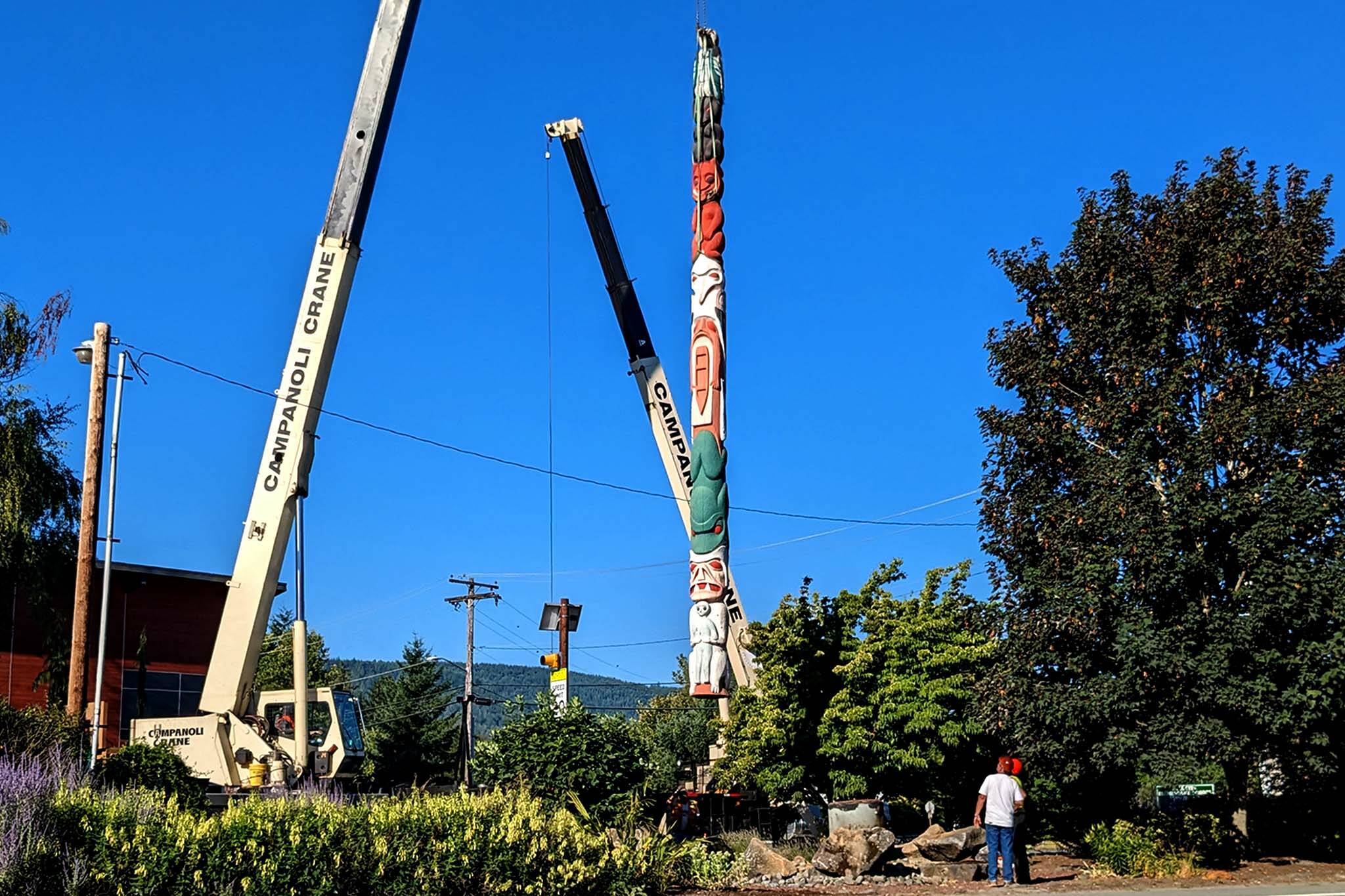Fall City’s iconic, yet controversial totem pole, erected nearly 90 years ago, was removed from its longtime home in Fall City’s business district early morning Aug. 14.
Standing on the sidewalk near the Fall City Library or sitting in office chairs outside the Hauglie Insurance building, with coffee in hand, a dozen or so residents watched and took photos as workers began removing the pole around 8 a.m.
Within an hour, the 43-foot-tall pole had been separated from its base along State Route 202, lifted by crane and put on a semi-truck. It will move to a new permanent home at Baxter Barn, a historic farm property on the outskirts of town.
Members of the Fall City Community Association (FCCA), who own the garden where the pole stands, voted to move the carving last year. Cory and Lena Huskinson, the owners of Baxter Barn, agreed to take the carving and keep it available for public viewing.
Since its rising in 1934, a totem pole has stood at the front of town, welcoming visitors as they come and go. The original pole was briefly replaced by a replica in the 1980s, when it was thought to be irreparable. But a group of Boy Scouts led a restoration effort and the original pole rose again in 2001.
Then last year, FCCA members acknowledged the pole once again had reached the end of its life and had become a safety concern. The association decided to explore options to either restore, repurpose or donate the wood art because the totem was in need of repair — and because the origins of the pole were once again scrutinized amid accusations of cultural appropriation.
For many residents, the pole is beloved. Over its near-century standing over the town’s main street, it has become synonymous with Fall City and its history. Hugh H. Hinds, a white man, carved the pole in honor of Julia Harshman, a town benefactor who had died a year earlier. Harshman founded the first telephone company in the Snoqualmie Valley out of what’s now Aroma Coffee.
Yet, only recently have residents begun to reckon with the totem pole’s problematic elements. The carving has long drawn the ire of Snoqualmie Tribal members, whose ancestral lands the pole resides on. Not only is the totem an example of a white man appropriating indigenous art, Snoqualmie Tribe members say, but it’s appropriating an art style not traditionally practiced by any tribes in Washington.
Totem pole carving is an art form that originated from tribes in modern-day British Columbia and southern Alaska. Totem poles did not arrive in Washington until the early 1900s, when one was stolen from Alaska by Seattle businessmen and placed in the city as a tourist attraction.
“The fact that you have a non-Native person appropriating an art style from thousands of miles away to honor another white person within lands where there’s an established Indigenous presence for a minimum 13,000 years is problematic,” Steven Moses, an archaeologist for the Snoqualmie Tribe, told the Valley Record last year. Removing the pole “opens the door” to tell Harshman’s story in a more culturally appropriate way, he said.
Correction: A prior version of this story misidentified one of the Baxter Barn co-owners. We regret the error.


